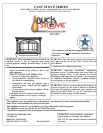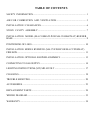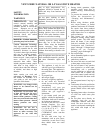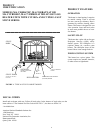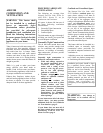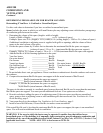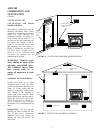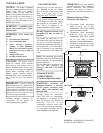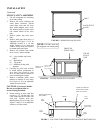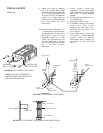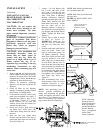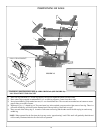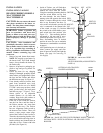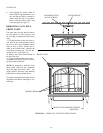
AIR FOR
COMBUSTION AND
VENTILATION
WARNING: This heater shall
not be installed in a confined
space or unusually tight
construction unless provisions
are provided for ade-quate
combustion and ventilation air.
Read the following instructions
to ensure proper fresh air for this
and other fuel-burning
appliances in your home.
Today’s homes are built more energy effi-
cient than ever. New materials, increased
insulation, and new construction methods
help reduce heat loss in homes. Home
owners weather strip and caulk around
windows and doors to keep the cold air
out and the warm air in. During heating
months, home owners want their homes as
airtight as possible.
While it is good to make your home
energy efficient, your home needs to
breathe. Fresh air must enter your home.
All fuel-burning appliances need fresh air
for proper combustion and ventilation.
Exhaust fans, fireplaces, clothes dryers,
and fuel burning appliances draw air from
the house to operate. You must provide
adequate fresh air for these appliances.
PROVIDING ADEQUATE
VENTILATION
The following are excerpts from
National Fuel Gas Code, NFPA 54/
ANSI Z223.1, Section 5.3, Air for
Combustion and Ventilation.
All spaces in homes fall into one of
the three following ventilation
classifications:
1. Unusually Tight Construction
2. Unconfined Space
3. Confined Space
The information on pages 4 through 5
will help you classify your space and
provide adequate ventilation.
Unusually Tight Construction
The air that leaks around doors and
windows may provide enough fresh
air for combustion and ventilation.
However, in buildings of unusually
tight construction, you must provide
additional fresh air.
Unusually tight construction is
defined as construction where:
a Walls and ceilings exposed to
the outside atmosphere have a
continuous water vapor re-
tarder with a rating of one
perm (6 x 10
-11
kg per pa-sec-
m
2
) or less with openings
gasketed or sealed and
b Weather stripping has been
added on openable windows
and doors and
c Caulking or sealants are
applied to areas such as joints
around window and door
frames, between sole plates and
floors, between wall-ceiling
joints, between wall panels, at
penetrations for plumbing,
electrical, and gas lines, and at
other openings.
If your home meets all of the three
criteria above, you must provide
additional fresh air. See Ventilation
Air From Outdoors, page 5.
If your home does not meet all of
the three criteria above, proceed to
Determining Fresh-Air Flow For
Heater Location, page 4.
Confined and Unconfined Space
The National Fuel Gas Code, ANSI
Z223.1 defines a confined space as a
space whose volume is less than 50
cubic feet per 1,000 Btu per hour (4.8
m
3
per kw) of the aggregate input
rating of all appliances installed in that
space; and unconfined space as a
space whose volume is not less than 50
cubic feet per 1,000 Btu per hour (4.8
m
3
per kw) of the aggregate input
rating of all appliances installed in that
space. Rooms communicating directly
with the space in which the appliances
are installed*, through openings not
furnished with doors, are considered a
part of the unconfined space.
This heater shall not be installed in a
confined space or unusually tight
construction unless provisions are
provided for adequate combustion and
ventilation air.
*Adjoining rooms are communicating
only if there are doorless passageways
or ventilation grills between them.
Installation and repair should be done
by a qualified service person. The
appliance should be inspected before
each use and at least annually by a
professional service person. More
frequent cleaning may be required due
to excessive lint from carpeting,
bedding material, pet hair, etc. It is
imperative that control compartments,
burners and circulating air
passageways of the appliance be kept
clean.
WARNING: Any change to
this heater or its controls can be
dangerous.
3



